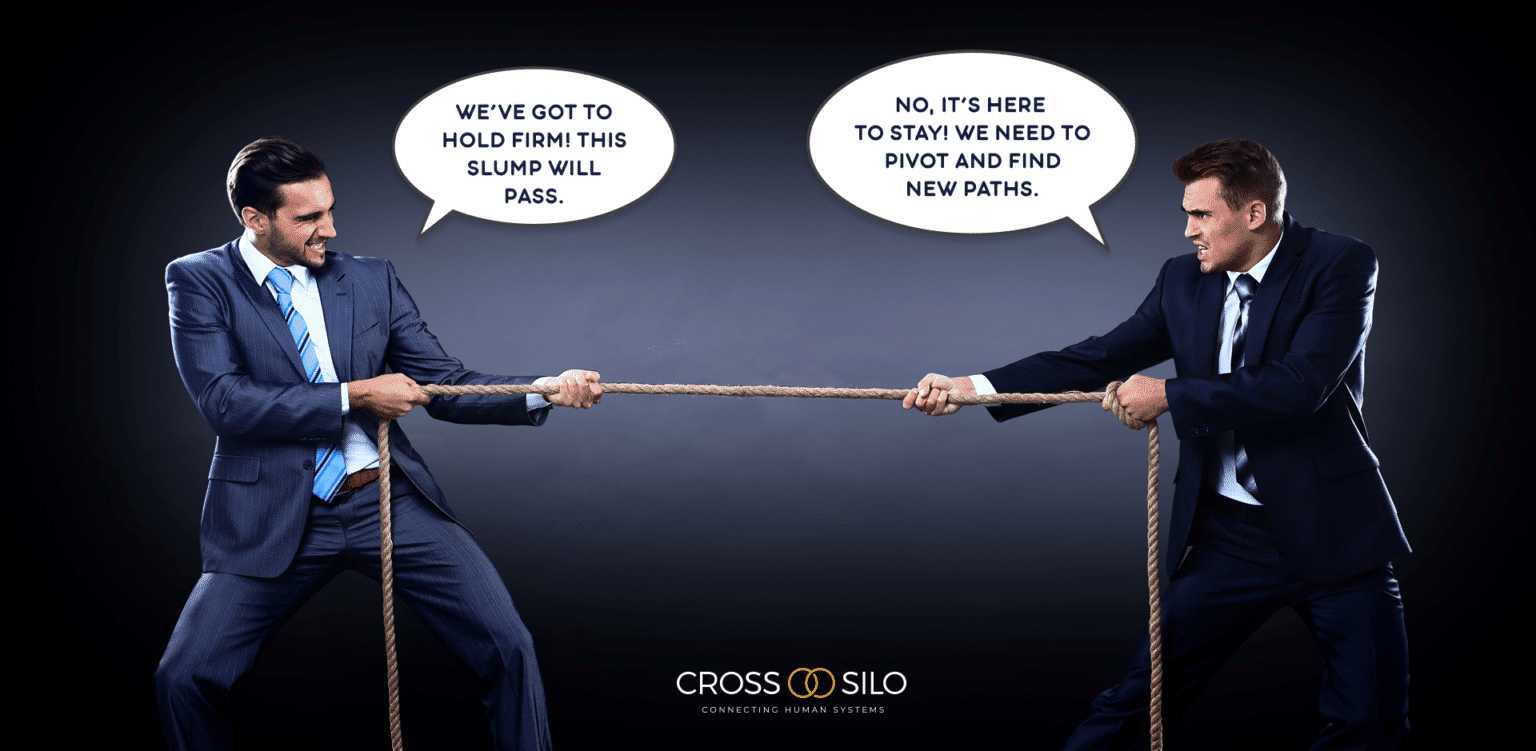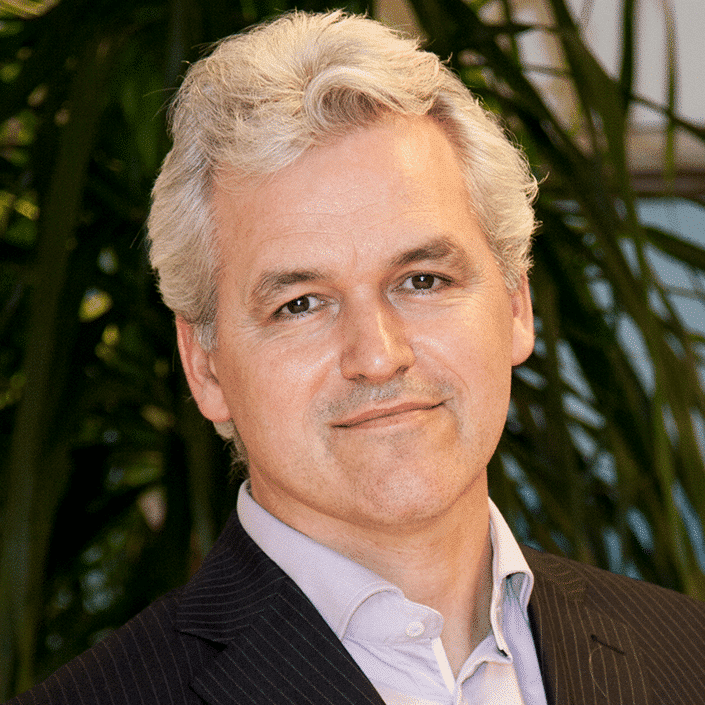In the competitive landscape of modern business, leaders face a pivotal decision: Should they focus on optimizing for short-term performance or invest in long-term strategic renewal? This choice goes beyond mere operational tactics; it reflects the organization’s foundational philosophy and structural integrity.
Performance optimization focuses on achieving immediate financial results—enhancing quarterly earnings, maximizing efficiency, and securing rapid gains. This approach often fosters a siloed organizational structure, where departments operate independently with minimal cross-functional interaction, prioritizing quick wins over collaborative, strategic endeavors. Such a configuration restricts the flow of information and confines decision-making within isolated pockets, catering to immediate efficiencies rather than sustainable growth.
However, transitioning to strategic renewal—a methodology emphasizing revitalizing the organization’s strategy to include new, fitting opportunities, emphasizing innovation and adaptation while grounded in existing strengths—holds immense potential. It’s not just about superficial changes or positive thinking sessions. Nor should leaders expect an organization deeply entrenched in performance optimization to leap spontaneously towards strategic foresight. The prevailing mindset focused on short-term metrics ingrains practices and attitudes that resist the profound structural changes necessary for embracing long-term strategic initiatives.
This resistance is not merely a hurdle but a significant barrier that must be consciously addressed. Shifting to a strategic renewal approach necessitates a fundamental transformation in organizational culture, communication channels, and collaborative practices. It requires building a shared vision that extends beyond immediate results to foster a proactive, adaptable organization capable of thriving amid future uncertainties.
Understanding this tension between short-term efficiency and long-term strategic foresight is critical. This introduction sets the stage for a deeper exploration of how leaders can effectively navigate this balance, ensuring their organizations are optimized for today’s challenges and strategically positioned for tomorrow’s opportunities.
Strategic Renewal: Leveraging Core Strengths for Market Opportunities
Strategic renewal (strategic realignment, repositioning, reorientation, or pivoting) goes beyond aligning existing strengths; it involves a deep, analytical understanding of an organization’s core competencies and the intrinsic positive aspects that define its competitive edge. This strategic approach ensures that a company capitalizes on market opportunities well-suited to its unique capabilities, thereby maximizing its potential for success.
Positive Opportunity Engagement:
The key to effective strategic renewal is the discerning identification of opportunities. Companies must resist the temptation to pursue every new market trend or innovation. Instead, they should focus their resources on opportunities that align with their strengths and positive core. This targeted approach helps companies:
- Avoid Overextension: By focusing on well-suited opportunities, companies prevent diluting their efforts and resources, which can happen when trying to capture markets with limited expertise or capabilities.
- Enhance Market Position: Leveraging core strengths allows companies to refine and deepen their market presence, offering services or products that are competitive and superior due to the alignment with their core capabilities.
- Increase Success Rates: Strategic renewal enhances the likelihood of success because efforts are concentrated on arenas where the company is already strong rather than venturing into less familiar territories without the necessary tools or understanding.
Implementing Strategic Renewal:
To implement strategic renewal effectively, companies should:
- Conduct a Strengths Audit: Regularly assess and document the organization’s core strengths and capabilities to understand what it does best and identify its positive core.
- Market Analysis: Continuously analyze market trends and identify opportunities that match the company’s documented strengths.
- Strategic Decision-Making: Make informed decisions to pursue opportunities that align with the strengths audit and market analysis, ensuring that each new venture or pivot is strategically sound.
- Resource Alignment: Allocate resources, including capital, talent, and time, in ways that support the most promising opportunities identified through strategic realignment.
- Monitor and Adapt: Establish metrics for monitoring the performance of new strategic initiatives. Be prepared to adapt swiftly based on real-time feedback and evolving market conditions.
Conclusion
Strategic renewal is a disciplined approach to business growth and sustainability. Organizations can achieve greater efficiency, effectiveness, and competitive advantage by aligning a company’s operations and growth initiatives with its most potent capabilities and core values. This protects against the risks associated with market volatility and positions the company to thrive by doing what it does best.
The Corporate Tug of War: The Battle Between Conservation and Innovation
When revenue declines, a silent but intense struggle unfolds in the heart of a bustling corporate headquarters. It’s not the clashing of swords but a tug-of-war that carries the weight of the company’s future. At each end of a metaphorical rope, two executives embody the dual forces shaping their organization’s destiny:
On one side stands the Defender, a seasoned executive with a sharp eye on the company’s current metrics. His hands grip the rope tightly, his stance rooted in the familiar terrain of the ongoing business. He is not just a guardian of efficiency but a pillar of stability, whose role is crucial in retaining market share, reducing costs, and squeezing the most out of the existing market. His philosophy is optimizing, maintaining, and fortifying what already works for the company’s survival, a role that cannot be underestimated in the corporate landscape.
Across from him, the Innovator takes a bold and contrasting stance. His eyes are set on the distant horizon and ablaze with the potential of emerging opportunities and uncharted territories. He pulls the rope towards the future, not just advocating for investment in new ideas and technologies but championing them. With a resolve fueled not just by visions of growth, but by the belief in the power of continuous evolution and adaptation, he challenges the status quo, pushing for probing and prototyping, eager to tap into new markets and create future revenue streams. His vision is not just about change, but about the exciting possibilities that lie ahead.
The rope between them is tense, vibrating with the opposing energies of conservation and innovation. This is not just a contest of strength but a fundamental debate about direction. The entire organization watches, knowing that the outcome of this struggle will shape their collective future. They decide whether to follow the paths of safety and familiarity or venture into potential and risk.
This corporate saga captures the essence of strategic decision-making in today’s complex business environment. The choices made at the top reverberate throughout the corridors of power, influencing lives and livelihoods and, ultimately, the success or failure of the enterprise.
Strategic Shifts: Moving from Conservation to Innovation in Organizational Operations
Organizations often face a critical balancing act between optimizing for immediate performance and positioning themselves strategically for future challenges and opportunities. This transition requires a careful consideration of whether to concentrate on short-term gains or to invest in long-term resilience and diversification.
Transitioning from a siloed operation to a holonized (holistic and interconnected) operation can indeed follow different paths depending on the urgency and nature of the external pressures or internal ambitions. The process often varies between organizations, but broadly, it can be conceptualized into three primary approaches: the leap, the split, and the shift.
Here’s a detailed look at each method and how an organization might navigate these transitions:
The Leap (Radical Transformation):
The Leap is particularly relevant when short-term focused operations are no longer viable due to sudden market disruptions. This strategy demands quick, decisive action, prioritizing long-term strategic realignment over immediate operational continuity.
- Context: This approach is often adopted in response to a sudden, disruptive event that renders the existing business model untenable (e.g., a global pandemic impacting the travel and hospitality industry).
- Process:
- Rapid Reassessment: Quickly reassess the current business model, resources, and market position.
- Vision Redefinition: Define a vision that responds effectively to the new reality.
- Implementing Change: Make substantial and swift changes to operations, often involving significant shifts in strategy, structure, and culture.
- Challenges: There is high risk due to rapid change, potential stakeholder resistance, and the need for immediate alignment and execution.
- Benefits: Allows immediate response to industry disruptions, potentially leapfrogging competitors by transforming business practices.
The Split (Parallel Path Approach):
The Split strategy enables an organization to maintain its short-term operational targets while building long-term capabilities. This dual-focus approach ensures that immediate business needs are met even as the organization explores more diversified avenues for future growth.
- Context: This approach is suitable when an organization needs to continue its current operations while simultaneously exploring new opportunities that may diverge significantly from the existing business.
- Process:
- Organizational Segmentation: Divide the organization into segments, one focusing on maintaining and optimizing current operations and the other exploring new avenues.
- Resource Allocation: Allocate resources that allow both segments to operate effectively, ensuring that innovation is well-funded while current operations are not jeopardized.
- Strategic Leadership: Establish clear leadership roles and communication channels between the segments to ensure strategic alignment and effective knowledge transfer.
- Challenges: Managing resource competition between segments, maintaining coherence in brand and strategy, and potential internal conflicts.
- Benefits: Balances risk by maintaining steady revenue streams while exploring innovative growth opportunities.
The Shift (Evolutionary Approach):
The Shift is suited for scenarios where long-term market trends are visible on the horizon. It allows for a thoughtful and structured approach to shifting from a current, focused strategy towards a more diversified, strategic alignment.
- Context: This approach is best for scenarios where industry changes are foreseen well in advance, allowing for a structured and systematic transition.
- Process:
- Long-term Planning: Develop a phased plan to gradually shift resources and operations toward new business models or markets.
- Incremental Changes: Implement changes incrementally to minimize disruption and allow time for adjustment at each stage.
- Continuous Assessment: Review progress regularly and adapt the transition plan as necessary to respond to new information and conditions.
- Challenges: It requires accurate forecasting and continuous flexibility in strategy, and there is potential for slow progress that may not keep pace with industry changes.
- Benefits: Minimizes immediate disruption, spreads the risk over time, and allows for learning and adaptation during the transition.
Navigating Back from Holonized to Siloed:
While less common, reverting from a holonized to a siloed structure may sometimes align more closely with short-term operational needs, especially in contexts where highly specialized responses are required quickly. However, this approach must be carefully managed to avoid undermining long-term strategic goals.
- Process:
- Re-evaluation of Integration Benefits: Assess whether the holistic integration still serves the organization’s strategic goals or if segmentation would drive better performance.
- Strategic Decentralization: Implement structural changes that grant more autonomy to specific divisions or business units.
- Controlled Autonomy: Establish frameworks allowing decentralized decision-making while maintaining overarching strategic alignment and performance monitoring.
Conclusion
The best approach depends on the organization’s specific circumstances, including market dynamics, internal capabilities, and risk tolerance. Each method has its trade-offs, and often, the choice involves a blend of these strategies rather than a strict adherence to one. Leadership vision, stakeholder buy-in, and robust change management practices are critical in effectively managing these transitions.
The Future-Fit Organization: Shifting from Isolated Efficiency to Integrated Adaptability
Siloization and holonization represent fundamentally different approaches to organizational structure and strategic focus:
- Siloization is closely associated with optimization and specialization. In this approach, each department or unit operates separately, focusing intensely on specific, short-term results. This approach can lead to impressive efficiencies and fine-tuned expertise in isolated areas, but often at the cost of broader organizational synergy and adaptability.
- Holonization embraces an integrated, distributed, and interconnected approach, drawing on the concept of holons — entities that are autonomous and self-reliant yet fundamentally linked to the bigger system. This strategy fosters a long-term perspective, encouraging collaboration and information sharing across various parts of the organization. By focusing on interdependencies and collective strengths, holonization enhances the organization’s ability to adapt to future challenges and cultivates a more resilient and agile organizational structure.
This fundamental shift from isolated efficiency to integrated adaptability underscores a move from merely reacting to immediate demands to proactively engaging with complex, long-term dynamics. This proactive approach is crucial in today’s rapidly changing business landscape, highlighting the urgency of adapting to future challenges.
Closing Statement
Our work at CROSS-SILO is about preparing companies for a transformative shift toward holonization. For nearly two centuries, the narrow-minded and disengaging effects of siloization have not only divided organizations but have also echoed across societies, reinforcing isolation over integration.
By championing holonization, RoundMap aims to dismantle these outdated paradigms and foster a new era of interconnectedness and collective success. Our approach is designed to overcome the divisions of the industrial age, encouraging organizations to embrace a more holistic, adaptive, and collaborative framework.
This shift is not just about enhancing organizational efficiency—it’s about reshaping how businesses operate in a fundamentally interconnected world, promoting a culture that values long-term strategic thinking and broad-based engagement over isolated short-term gains.
Author
-
Edwin Korver is a polymath celebrated for his mastery of systems thinking and integral philosophy, particularly in intricate business transformations. His company, CROSS/SILO, embodies his unwavering belief in the interdependence of stakeholders and the pivotal role of value creation in fostering growth, complemented by the power of storytelling to convey that value. Edwin pioneered the RoundMap®, an all-encompassing business framework. He envisions a future where business harmonizes profit with compassion, common sense, and EQuitability, a vision he explores further in his forthcoming book, "Leading from the Whole."
View all posts Creator of RoundMap® | CEO, CROSS-SILO.COM






